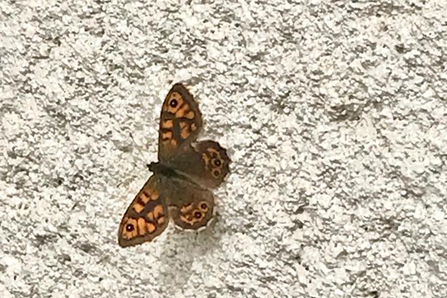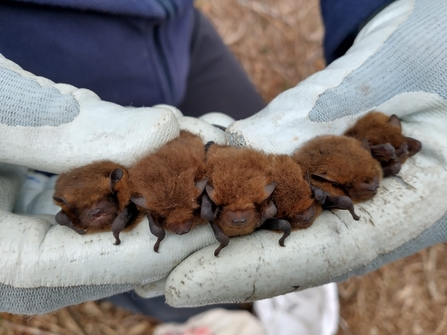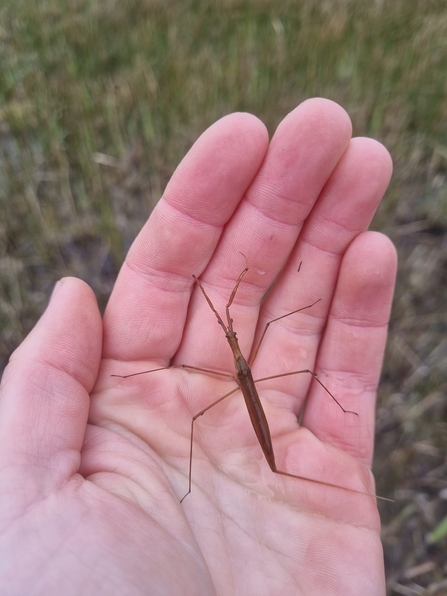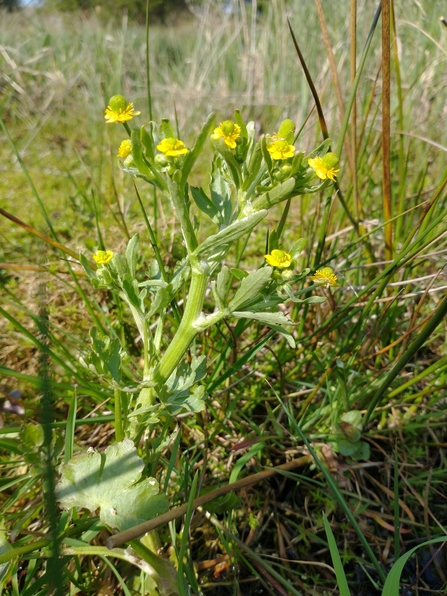Weekly wild news from our reserves - 6 May 2022
Bluebells – Jamie Smith
This gorgeous male wall brown butterfly visited the barn garden at Lound Lakes this week. This is the first one to be recorded in Suffolk so far this year. The wall brown is mainly pale orange with greyish-brown markings and black eyespots. The best way to identify the 'brown' butterflies is by looking at the eyespots on their wings. The combination of orange and brown markings, together with one large eyespot on the forewing and four smaller eyespots on the hindwing, is unique to the wall brown.

Male wall brown – Andrew Hickinbotham
Soprano pipistrelles
Lound Lakes Warden Andy and his team were thrilled to record 20 soprano pipistrelle bats during bat box checks on the nature reserve. All were a healthy weight with 16 females of which 14 bred last year, 3 males and 1 which flew from box before identification. Last year only 4 were recorded, which shows that the bats are now breeding and thriving in their artificial homes.

Bat surveys at Lound Lakes – Andrew Hickinbotham
Nightingale song
Nightingales have returned to Lackford Lakes and have been singing their hearts out as darkness falls. A shy bird, the nightingale is about the same size as a robin and a summer visitor, arriving in April and leaving in September. Nightingales nest in dense scrub, from where they sing their famously beautiful melodies throughout the day and at night.
Snorkelling stick insect
The water stick insect is an underwater predator which hides among reeds and stems in lakes and ponds. Here, it waits, perfectly camouflaged, ready to ambush its prey. It adopts a mantis-like pose when submerged, capturing passing creatures like tadpoles and small fish. It uses its long, thin 'tail' as a siphon for breathing: it protrudes above the water's surface and acts just like a snorkel.

Water stick insect at Roydon Fen – Joe Bell-Tye
Celery-leaved buttercup
Celery-leaved buttercup is a common plant of damp places and wet meadows like this one at Darsham Marshes. It has yellow flowers with small petals that appear in branched clusters. As its name suggests, it has celery-like leaves that are divided into three lobes.

Celery-leaved buttercup at Darsham Marshes – Jamie Smith
Blue view at Reydon Wood
Reydon Wood is looking glorious with bugle, early purple orchid and bluebells all in flower. The early morning birdsong is equally as moving, as recorded by warden Jamie in the clip below.
Early morning birdsong at Reydon Wood (https://youtu.be/ln2xumxAeiM)
Early morning birdsong at Reydon Wood - Jamie Smith
Hares looking at you!
This hare at Castle Marshes, captured on our night cameras, seems to be keeping a close eye on us...

Hare at Castle Marshes



